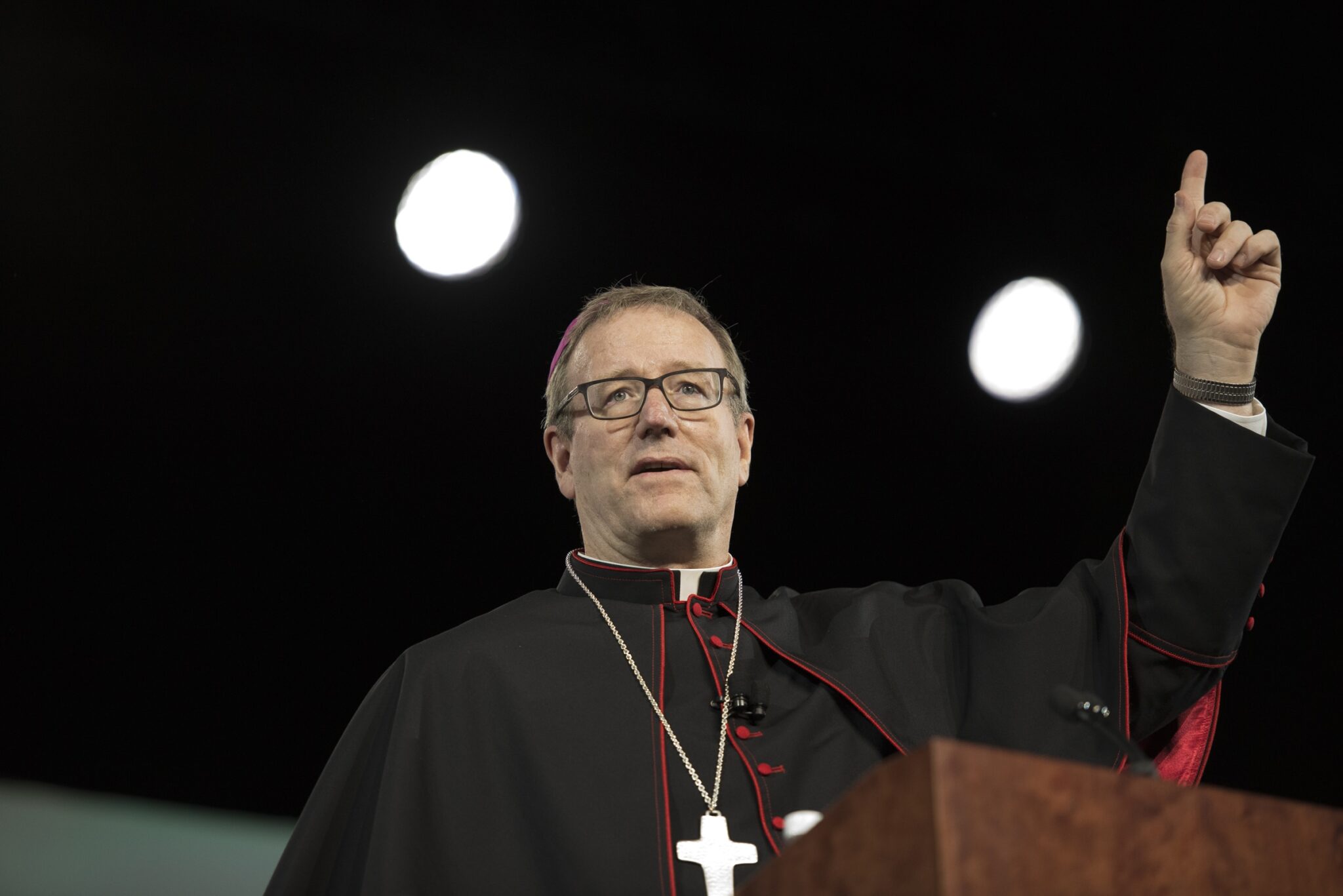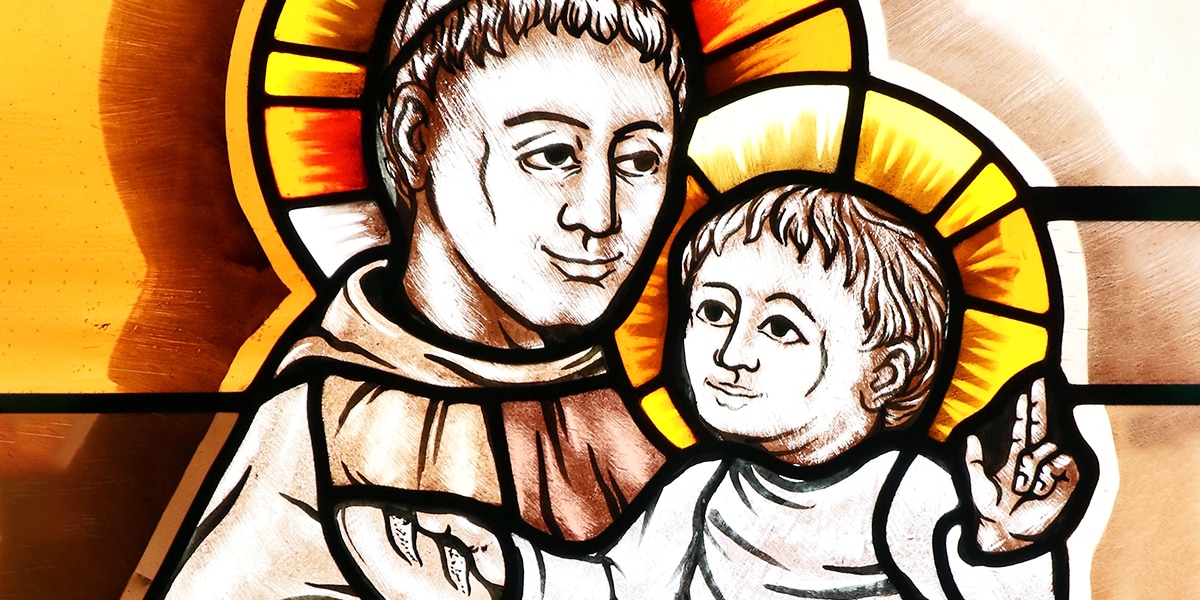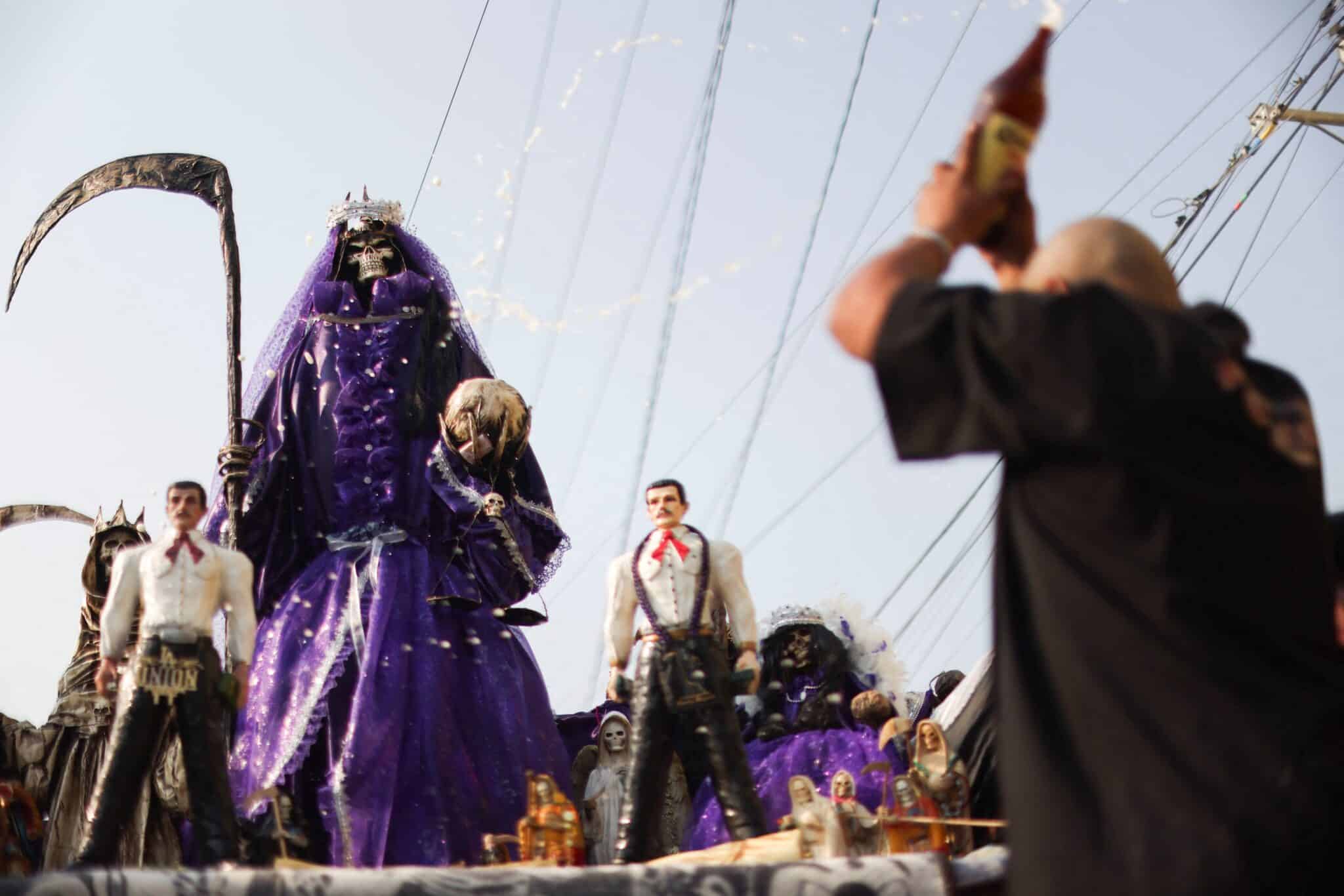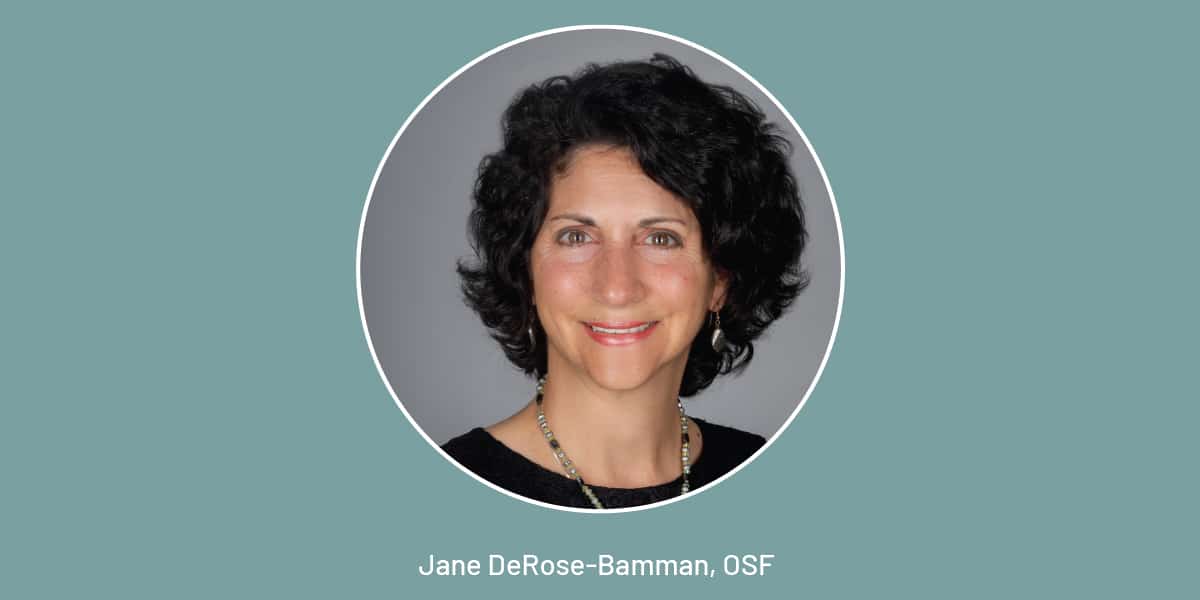Robert Barron is settling into his new role as an auxiliary bishop in the Archdiocese of Los Angeles but it was an adjustment at first. Barron is the founder of Word on Fire Catholic Ministries, which produced the award-winning Catholicism series used in thousands of parishes and that aired on PBS stations around the country. He’s a native of Chicago and was a priest for the Archdiocese of Chicago before being ordained a bishop in the fall of 2015.
He never thought it would happen.
“God’s full of surprises, ” he tells St. Anthony Messenger. “I’ll admit candidly, it was a difficult transition because I was totally ensconced in Chicago friends, family, ministry, connections, everything. I travel around the world a lot, but Chicago has always been home. “
With one phone call from the US papal nuncio, all of that was taken away, and he says he experienced a type of desolation. “I didn’t know this place at all. I had been to LA to give talks and that sort of thing. But the geography, the people, the priests, the roads I knew nothing about it. It was hard. The first couple of months here were difficult just because every day was such a huge adjustment, ” he says. “But I’ve turned the corner. I’m very comfortable here now and have gotten to know a lot of folks. “
Some of the little things were an adjustment, too like wearing a zucchetto. When delivering the opening keynote address at the World Meeting of Families in Philadelphia in September 2015, he asked the crowd to forgive him for always adjusting his zucchetto. He had only been ordained about a week.
“I’m kind of used to it now, but when you first put it on it’s weird, ” he recalls. “It does feel like it’s falling off of your head all of the time. I’m not used to having a hat in that position. “
Then there is the bishop’s ring. “I never wore a ring in my life, ” he says. “When you’re a bishop, they tell you don’t take it off. It’s like a wedding ring. I’m just now kind of getting used to it, but that was difficult, too. “
None of these are earth-shattering problems, he says, just things to adjust to. The weather and location have helped the transition. Los Angeles Archbishop Jos Gomez assigned Barron to be the episcopal vicar for the Santa Barbara Pastoral Region, which has a population of one million Catholics and is larger than many dioceses in the country. He lives in Santa Barbara, which he calls the “American Riviera. “
It’s certainly a different climate than what he was used to in Chicago. Barron admits that he relishes teasing his friends and family in Chicago about the beautiful weather in Santa Barbara especially during this past winter.
Before being named a bishop, Barron served as rector and president of Mundelein Seminary and the University of St. Mary of the Lake in Illinois. Since he has spent much of his ministry in academics, he has had to shift his focus as a bishop.
“What strikes me is it’s a very pastoral job. I’m out with the people a lot, ” he says. “I’ve had probably more of the smell of the sheep in the past six months than I’ve had in a long time. “
So far, his duties as a bishop Confirmations, parish visits, presbyteral council meetings, and the like haven’t limited his evangelical work with Word on Fire, but time will tell. Despite Barron’s relocation, Word on Fire remains headquartered in a Chicago suburb.
Evangelization Begins in Chicago
Barron’s interest in evangelizing through media began in 1999 when he asked parishioners at his parish Sacred Heart in Winnetka, Illinois to fund a radio program that he would host on WGN Radio in Chicago.
“I would say that was the moment that Word on Fire began, ” back in 2000, says Father Steve Grunow, CEO of Word on Fire Catholic Ministries and a priest of the Archdiocese of Chicago. Barron is founder of this Catholic media apostolate, dedicated to spreading the beauty and truth about the Catholic faith. It has been enormously successful over the years, with millions of viewers and listeners via TV, radio, books, articles, and social media.
By that time Barron had been teaching at Mundelein Seminary the largest major seminary in the United States for 14 years and was traveling the country preaching and giving talks and workshops. He also had published seven books. With the radio show opportunity, he gathered a board of directors and founded Word on Fire.
Around this time Chicago’s late Cardinal Francis George assigned Barron the task of “evangelizing the culture. ” Grunow recalls: “I remember Father Barron saying that the conversation with Cardinal George was that John Paul II asked Cardinal George, ‘What are you doing to evangelize the culture?’ Cardinal George did not have an answer for him and that disturbed him. Then he asked Father Barron to, in the cardinal’s words, ‘jump-start’ evangelization in the archdiocese, at which time Father Barron said, ‘Well, what does that mean?’ Cardinal George said, ‘I don’t know.’ I think the Spirit took over from there. “
What resulted was a yearlong endeavor called Mission Chicago 2006, which included a three-day Festival of Faith at a convention center, a day of round-the-clock confessions with 70 priests on hand, a series of six sermons by Barron, and the distribution of 2,500 motivational DVDs.
Catholicism Goes Nationwide
After the successful Chicago Mission 2006, the question became, “What is next for Word on Fire? ” The radio show had been picked up by WGN America and aired nationally. The Word on Fire website became a hub for podcasts, videos, sermons, and reflections by Barron and others that sought to engage fallen-away Catholics.
Barron wanted to make a documentary about the Catholic faith that would do for the Catholic Church what Kenneth Clark’s Civilisation did for Western Civilization. The Catholicism series was born.
“Once that clarity was given, the begging began, ” Grunow recalls. The series cost $3 million to produce and was financed by donations from individuals, mostly laypeople. No money came from the Archdiocese of Chicago. Catholicism included 10, hour-long DVDs, leader and group study guides, and a 300-page stand-alone book of the same title. The series, which Barron hosts, was filmed in state-of-the-art high-definition and spans more than 50 locations in 15 countries.
Those involved made it for a Church and public audience. Word on Fire pitched all 10 episodes of Catholicism to PBS, and the network chose four. Ninety public stations across the country aired those four episodes. No money was exchanged under the agreement, despite PBS’ usual practice of charging to air outside productions.
Preview of Coming Attractions
Now Barron and his Word on Fire team are working on the high-quality follow-up to Catholicism& called Pivotal Players, which will profile great Catholics throughout history.
Catholicism had an episode featuring four saints. But Barron, who says he has always been “big on the saints, ” wanted to expand that to great Catholic figures. “I think that’s what always grabs people’s imaginations, when you instantiate the faith in a figure, in a person. And I wanted it to be saints, scholars, artists who have really influenced the Catholic imagination, ” he says.
They settled on 10 figures: St. Francis of Assisi, St. Thomas Aquinas, Blessed John Henry Newman, St. Catherine of Siena, G.K. Chesterton, Michelangelo, St. Augustine of Hippo, St. Benedict, St. Ignatius, and Bartolom de las Casas. Six episodes, filmed on location, were released in September 2016. Each episode is designed to highlight the beauty in the faith.
“We tend to lead with the beautiful. That’s the mark of Word on Fire, ” Barron says.
“It’s beautiful and it’s smart. Those two features of the Catholic tradition we really emphasize. ” He aims to reach first fallen-away Catholics and then the broader public and to be “culturally plugged in.
“One thing that’s really gratified me about Word on Fire is that focus has not put people off at all. We have wonderful numbers in terms of our followers and those who use our material, ” he says. “In all my evangelical work I’m trying to respond to a crisis in the Church that I grew up with, that I’ve been living through, which is a crisis in education, communication, evangelization a passing on of our faith in a way that’s compelling, smart, beautiful, profound. We missed the boat on that. “
He calls it a crisis of “dumbed-down Catholicism, ” which his generation saw often. The view of this crisis was one he shared with Cardinal George.
While Cardinal George was a living influence in Barron’s spiritual life, through Pivotal Players he shares some of those he has studied over the years, such as Thomas Aquinas, G.K. Chesterton, and John Henry Newman. He has other influences, too, such as Dorothy Day, Dante, and Thomas Merton. Maybe those will surface in future Word on Fire series where they are committed to sharing the beauty of the faith.
“We’ve been saying it for a long time. Don’t lead with all of the hot-button issues, ” Barron says. “Lead with the beauty of the faith. Lead with the mercy of God. Lead with the saints. “
Cardinal George: Mentor and Friend
If not for Cardinal Francis George, Word on Fire Ministries and Barron might not have been as successful.
Barron explains: “Several years ago, to my infinite surprise, he said, ‘I want to take you out of the seminary and put you more into this evangelical work.’ And then he said, ‘And I’m going to invite you to stay at my house.’ ” Cardinal George always had several priests or auxiliary bishops living with him at the Archbishop’s Residence on the Near North Side of Chicago.
Barron lived with Cardinal George for about six years until he became rector of Mundelein Seminary. He says, “I was able to sit at his table. Not every night he was gone and I was gone a lot but maybe once or twice a week I’d be able to have dinner with him. “
Being at the table with Cardinal George, he says, was like going to graduate school. “I used to say that the conversation was like your doctoral defense. If you said something, he would come after you to know, ‘OK, what are the footnotes, what is the background, can you defend that position?’ ” Barron recalls. “But I learned so much about the Church’s missionary lan from him, because he was a missionary. “
It was Cardinal George who taught Barron how to read the Second Vatican Council as a missionary council. “He helped me to see what my generation got was a distortion of Vatican II whereby we spent a lot of time talking to ourselves about our inner-churchy issues usually about sex and authority, ” Barron says. “Cardinal George saw that as a tragedy in some ways because it obviated what Vatican II was about. “
The council was about bringing Christ, the light of the nations, to the world, he maintains. “That’s where a lot of my evangelical work would fit in there. Vatican II didn’t say conform yourself to the times; it said read the sign of the times. I think that people just miss that all of the time. You read the sign of the times in light of Christ. He helped me see that with great clarity. “
Barron continues to seek the late Cardinal George’s guidance, even today: “I’ve got his picture up in my room here. I pray to him a lot. I ask for his intercession. “
Reflecting on the Image of God
In September 2015, on the tail end of Pope Francis’ visit to America, Bishop Barron delivered the opening keynote address at the World Meeting of Families in Philadelphia. The meeting is held every three years and is sponsored by the Holy See’s Pontifical Council for the Family. It is the largest Catholic gathering of families. The theme of last year’s event was “Love Is Our Mission: The Family Fully Alive. “
In his address, Bishop Barron spoke on the topic of “Living as the Image of God: Created for Joy and Love. ” During his hour-long speech, he told attendees, “The image of God is for the world. We must think of ourselves as representatives of God bringing his power, his wisdom, his heart, his mind to the world. Image of God is a mission and a responsibility. “
The family, he said, “is the place where the imago dei [the image of God] is burnished, where the imago dei is brought to life. . . . Families where the virtues are cultivated, the virtues of courage and of prudence, virtues of forgiveness, virtues of nonviolence where these virtues are being taught, that’s a family that can go out to teach the world the same virtues. “








